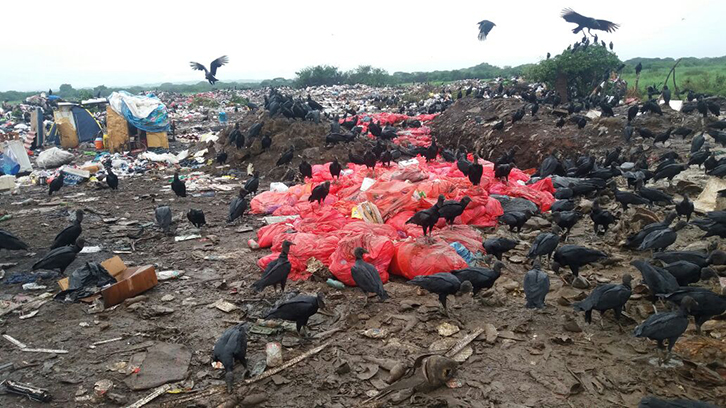Local awareness to mitigate Global Warming

In developing countries, people attribute poor landfill management to authorities not recognizing they also share part of the responsibility. They consume material resources and generate solid waste, which decomposition emits landfill gas, which is made up of 98% of greenhouse gases carbon dioxide (CO2) and methane. Globally, landfill gas represents only 3% of all sources producing environmental pressure for Global Warming or Climate Change; well below other sources such as energy production, agriculture or industrial processes. But the remaining 2% of landfill gas is composed of 160 trace gases, many of which are considered hazardous air pollutants that are emitted at low concentrations and are imperceptible to smell, but prolonged inhalation can cause chronic health damage.
People tend to alienate environmental pressures and become better involved with the social impacts that harm their personal health. However, environmental pressures are those that evolve into social impacts and must be identified and mitigated before this occurs. This study identifies the social impacts that 2% of landfill gases exert on the local population to recognize the environmental pressures that 98% exert on the global atmosphere. In this sense, the Cerro Patacón landfill, receiving 2,500 tons/day of mixed solid waste generated by 1.5 million people from Panama City, was used as a case study.
First, the environmental pressure that Cerro Patacón exerts globally was estimated at 1300 kton of CO2 equivalent/year; more than half of all the methane generated countrywide and 3-fold that of all other landfills in the country together, which serve 2.5 million people. Then, the social impact that Cerro Patacón exerts locally was estimated at 200 tons/year of hazardous air pollutants, which dispersion over 16 communities within a radius of 10 km represent a risk of continuous and prolonged exposure for 72,600 people daily inhaling these gases with concentrations above those allowed by international regulations.
These 72,600 people, representing only 5% of the Panama City population and generating only 6% of total solid waste disposed of in Cerro Patacón, receive 100% of the social impacts derived from the environmental pressure exerted by the remaining 95% of Panama City population that are not reached by hazardous air pollutants.
Recognizing how part of the population affects another allows stablishing a relationship between local social impacts and global environmental pressures as a measure of long-term awareness. Appropriate community participation and information dissemination tools could support local people to acknowledge how impacts on their personal health that are derived from the indiscriminate generation of solid waste are also affecting the global environment and help fight Climate Change.
Universitat Autònoma de Barcelona
References
Torrente-Velásquez, J.M., Giampietro, M., Ripa, M., Chifari, R. Landfill reactions to society actions: The case of local and global air pollutants of Cerro Patacón in Panama. Science of The Total Environment. 2020; vol. 706. DOI: 10.1016/j.scitotenv.2019.135988


